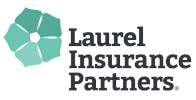
Wealthy clients looking to use life insurance in their estate plans may find that funding their policies with a loan makes sense, especially as interest rates are still relatively low.
The goal is to exploit low interest rates to get a cheap loan, which funds premium payments for a cash-value life insurance policy such as whole or universal life. If the rate of return on the insurance policy exceeds the loan’s interest rate over the life of the contract, the client comes out ahead.
Advisers who use the strategy — known as “premium financing” — say it largely makes sense only for ultrahigh-net-worth clients, since the insurance policies involved have face values extending into the tens of millions of dollars.
“You don’t do this for $500,000 or $2 million or something,” said estate planner Charlie Douglas.
Clients adopting premium financing borrow money to pay their annual insurance premiums, which can extend into the millions of dollars, rather than using cash or selling investments. A third party lends money to an irrevocable trust, which holds the life insurance, and the insurance is used as collateral for the loan.
The strategy shows up most often in estate planning, advisers said. For example, the insurance policy could pay a client’s estate taxes at the time of death, or provide liquidity for a surviving spouse rather than force the spouse to prematurely sell illiquid assets, said Thomas Henske, partner at Lenox Advisors Inc.
Clients benefit when, years after buying a policy, they can pay back the loan with cash value that’s built up inside the policy, and the policy’s death benefit exceeds the total out-of-pocket costs incurred from loan interest payments.
The premium-financing strategy grew more popular as interest rates bottomed out during the recent financial crisis, Mr. Henske said. But even though the Federal Reserve has raised interest rates since then, they’re still quite low, at around 1.75%-2%.
Mr. Henske and other experts cautioned that the strategy carries plenty of risks. Chief among them are rising interest rates and insurance-policy underperformance.
Scott Witt, an actuary and insurance adviser, said advisers should be wary of insurance illustrations that contain unrealistic optimism in their interest-rate and cash-value forecasts.
“Some of the people getting into [premium financing] aren’t going in with their eyes open to the downside risk,” he said. “There are a lot of unknowns.”
Critics say regulation hasn’t curbed overly rosy projections for indexed universal life insurance
That’s why clients who can afford to lose the insurance coverage, or can manage a situation in which the loan becomes larger than the underlying insurance asset, are best suited for the strategy, he said.
“I’d be more open to it than a situation where the policy is a critical piece of an estate plan or a core asset within someone’s overall portfolio,” Mr. Witt said. “That makes me a lot more nervous.”
